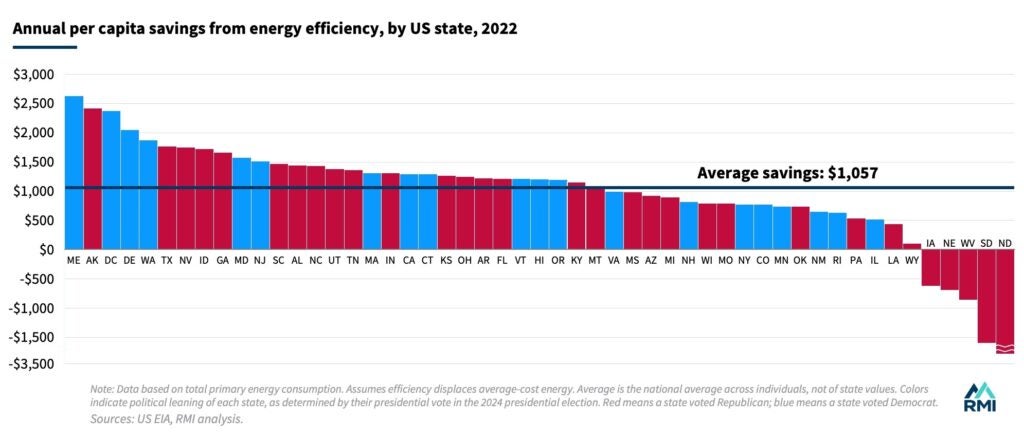
How Proposed EPA Changes Could Reshape U.S. Clean Energy Markets
Recent EPA actions may mark a pivotal shift in U.S. climate regulation. Proposed budget cuts, agency restructuring, and a potential rollback of the Greenhouse Gas Endangerment Finding—the legal foundation for regulating CO₂ and other greenhouse gases—signal a period of heightened uncertainty for federal climate policy. Our latest analysis explores what’s at stake, from the future of clean energy and transportation to the role of state-led initiatives and industry investment strategies.
The Environmental Protection Agency (EPA) recently announced the intention to reconsider the Greenhouse Gas (GHG) Endangerment Finding, along with a variety of other deregulation tactics. Grounded in the 2007 Massachusetts v. EPA case, in 2009, the EPA determined that GHGs endanger public health and welfare, creating the Endangerment Finding, requiring the EPA to regulate them.
For 15 years, the Endangerment Finding has been the basis for regulating GHG emissions under the Clean Air Act (CAA). This has created several regulatory dependencies. For example, the Inflation Reduction Act (IRA) added new sections to the CAA based on classifying GHGs as pollutants, creating programs for clean heavy-duty vehicles, the GHG Reduction Fund, and state GHG emissions standards. Revisiting the finding, combined with near-term regulatory shifts, could have far-reaching implications for energy markets and development.
Obstacles to Repealing the Endangerment Finding
The EPA’s recent move is considered high-risk as the process will likely be lengthy and face significant legal challenges. To proceed, the EPA must establish new advisory boards, gather scientific recommendations, draft a proposed reversal, solicit public comment, and respond to comments, which could take up to a year. Once the finding is complete, there may be significant legal hurdles due to the overturning of the Chevron doctrine, which previously gave agencies regulatory deference.
These cases could outlast the administration, leaving the fate of the reconsideration uncertain. If the “major questions doctrine” is invoked, which suggests significant regulatory actions require congressional authorization, it could mean the question is handed to Congress. While Congress may have shifted politically at that time, the current Senate has indicated its interest in scaling back parts of the Clean Air Act.
What Could Be Done in the Near Term
The administration has targeted a dual approach, weakening the ability of the EPA to regulate through budget cuts or reorganizations, while targeting specific reconsiderations or repeals of regulations. In March, the EPA announced it would slash its budget and recently announced it would remove the Office of Atmospheric Protection, the Office of Air Quality Planning Standards, and the Office of Research and Development. Significant cuts and restructuring are multi-faceted, as the EPA’s ability to repeal existing regulations, which must be done individually, while also ensuring that the regulations under review are less likely to be implemented and enforced. Separately, funds supporting EPA programs have been paused or revoked, kickstarting a slew of legal challenges from states and other stakeholders.
Direct Impacts on Energy Innovation and Costs
A variety of industries would likely be impacted by the removal of the Endangerment Finding, with clean transportation support, carbon capture, utilization and storage (CCUS) markets, clean industry innovation, and clean port financing likely facing significant headwinds, while natural gas pipeline deregulation and fossil fuel would likely experience moderate tailwinds. One of the most impacted areas will be energy efficiency standards, which have saved billions in utility bills for customers and businesses.

Source: RMI, How to Save Money for All Americans: Efficiency
Without EPA authority to regulate GHG emissions, tools such as the GHG Emission Factors Hub, key resources for businesses and consumers, may disappear. Energy efficiency standards like Energy Star, which the EPA plans to dismantle, have long been understood to drive innovation among manufacturers, resulting in increased quality and reduced costs to customers, even by conservative methods of measurement.
These bipartisan regulations, along with incentives such as those outlined in the IRA, act as a check on utilities, ensuring customers are not paying more than required. Without energy efficiency, homes and buildings are likely to use more electricity or gas, driving up costs for consumers and increasing overall energy demand, much of which will be met by fossil fuels.
States have played a large role in energy efficiency standards, saving customers hundreds of thousands on top of federal standards. While some have been slower to adopt cost-saving programs, states may face additional barriers to implementing new programs, through the potential loss of funding for planning and implementing lower-emissions solutions.
Kayla Main
Kleinman Center Research AssistantKayla Main is a Research Assistant at the Kleinman Center. Through the Kleinman Center, she also works with Energia, an international network supporting gender equity and sustainable energy progress, and their partners, such as Solar Sister.

